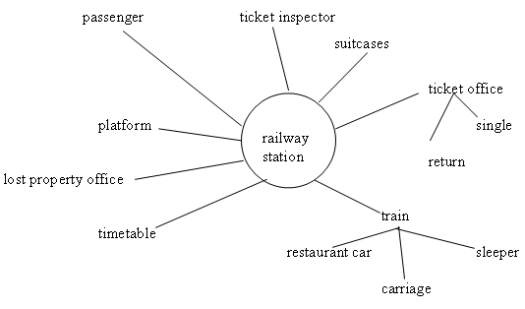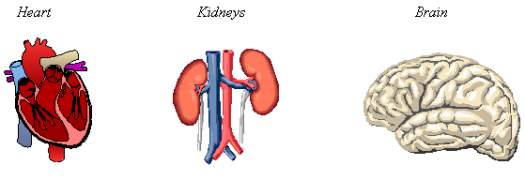Revising and Consolidating Vocabulary Through Multiple Intelligences
Anila R. Scott-Monkhouse and Hyo-jeong (Leona) Hur, Italy and Korea
Anila R. Scott-Monkhouse has been a teacher of English since 1991 and has taught both children and adults. She now teaches at Parma University (Italy), but also cooperates with the European College in Parma and is involved in training primary school teachers. She is an oral examiner for YLE, KET, PET and FCE. She has written articles on learner training, and together with M. Mezzadri and P. Taylor she has published a book on Italian grammar for English speaking learners. She is particularly interested in the student as an individual, and focuses on NLP, suggestopedia and Gardner’s theory on multiple intelligences applied to language teaching.
Hyo-jeong (Leona) Hur, a Ph. D. student in TESOL at the Hankuk University of Foreign Studies in Seoul, is involved in both teaching English as a foreign language and EFL teacher training in the Republic of Korea. Her main research interests are EFL teacher education, ENIE (English Newspaper in Education) and reading-writing integration.
Menu
Introduction
Lesson Plan
Examples
Acknowledgements
Anila and Leona met in Cambridge during a teacher training course in August 2009. Whilst preparing a micro-teaching session together, they developed the following activity, which was subsequently carried out in class with different students.
It is aimed at adult students at any level of knowledge of English.
As it is, the whole activity should last approx 50 mins.
The objectives are to:
- revise and consolidate vocabulary from previous lessons
- get students to organise their own notes
- encourage learner autonomy
- activate the individuals’ different intelligences
- expose students to different learning strategies
- develop peer-teaching and cooperative learning
- foster real communication in class
- stimulate intrapersonal and interpersonal intelligences
- evaluate the results of learning
Materials
- handouts with words encountered in previous lessons (in either reading passages, listening texts, or specific vocabulary exercises). The words are randomly organised (e.g. in lists, highlighted in passages, written in sentences, etc.) in the same way as they are generally found in students’ notebooks.
The students are to work in groups, and each group can be given either a different set of words or the same set.
- feedback form for each student
Part 1: Group work: organising vocabulary (15 mins)
The students are divided into groups and given handouts with words from previous lessons. They are asked to imagine that the handouts are their own notes.
In their group they have to devise and discuss ways of re-organising these notes so that their revision is easier and more efficient.
The teacher monitors in order to gather information on the different techniques devised by the groups and on the individual students’ intelligences coming into play; this information is necessary to prepare the feedback form for the present activity, and useful to refer to when planning future lessons.
Part 2: Group work: peer teaching (15 mins)
The groups are re-organised so that each student works with new peers (i.e. each new group is made up of members from each of the other groups); each student explains the method(s) thought of in the first group (activation of interpersonal intelligence).
Part 3: Feedback (10 mins)
Individual students are given a feedback form and asked to assess the different techniques by thinking about advantages and disadvantages for their own personal learning (activation of intrapersonal intelligence).
The form contains questions based on the methods which the different groups have devised, e.g.:
Has the use of different colour pens helped you?
Is it easier to remember words when they are related to a context?
Is ranking words useful?
Part 4: Class discussion (10 mins)
Class discussion with the aim of raising the students’ awareness of their own and other people’s learning style(s), increasing sensitivity towards differences between individuals (thus indirectly encouraging tolerance), and exploiting these differences.
The teacher can also gain essential information on the different intelligences present in the class.
Here are some examples of the ways the notes can be re-organised in the students’ notebooks. All the following examples involve linguistic intelligence.
Categories: this example stimulates logical/mathematical intelligence and highlights word order (fruit and vegetables, NOT vegetables and fruit)
| Fruit |
and |
Vegetables |
apricot
peach
apple
pear |
|
courgette
mushroom
carrot
bell pepper |
Spidergram: this example stimulates logical/mathematical, kinaesthetic and visual intelligences and is based on context. It involves both brain hemispheres (the left one, which is more analytical, and the right one, which tends to look at the ‘big picture’).

Table: this example stimulates logical/mathematical and visual intelligences, and is based on context (i.e. at the airport).
| People |
Places |
Objects |
Actions |
flight attendant
pilot
passenger
customs officer
|
arrival hall
departure lounge
check-in desk
gate
|
passport
ticket
boarding card
suitcase
|
take off
land
board
check in
|
Collocational grid: this example stimulates logical/mathematical and visual intelligences through collocations and colour coding

Gradables: this example stimulates logical/mathematical and visual intelligences through ranking

Pictures: this example shows medical English words (ESP/academic English) and stimulates logical/mathematical, kinaesthetic and visual intelligences

Anila and Hyo-jeong (Leona) would like to thank Silvana Richardson for all her precious teaching.
Anila also wishes to thank Gabriella Spadaro and Chaz Pugliese for opening up the world of Multiple Intelligences to her through their workshops (“Is the way we learnt the best way to teach?”, Bologna (Italy), 11 November 2006, and “Are we failing to reach our bodily-kinaesthetic and musically intelligent students?”, Canterbury (UK), 12 August 2008, respectively).

Please check the Teaching English Through Multiple Intelligences course at Pilgrims website.
Please check the NLP for Teachers course at Pilgrims website.


|